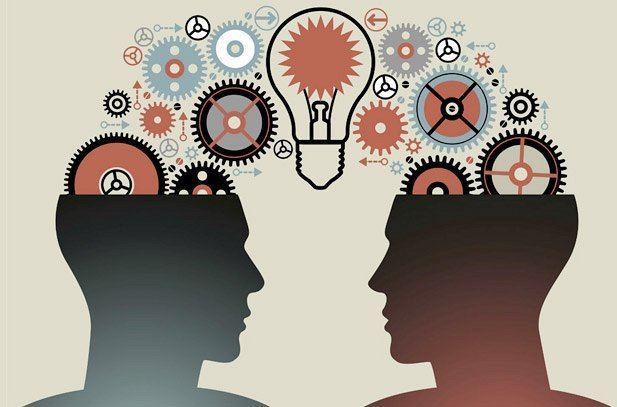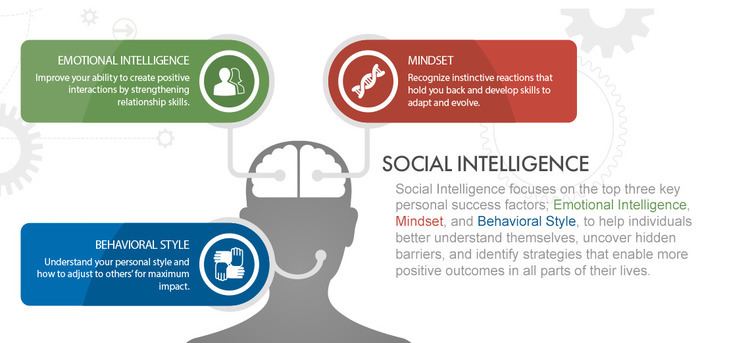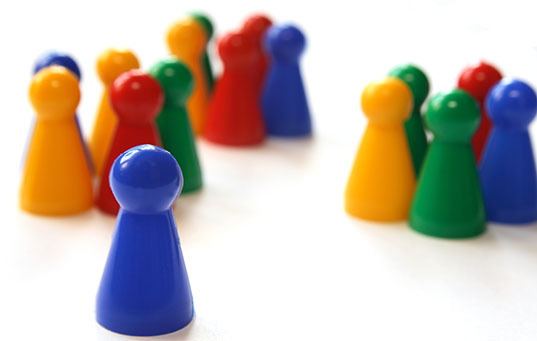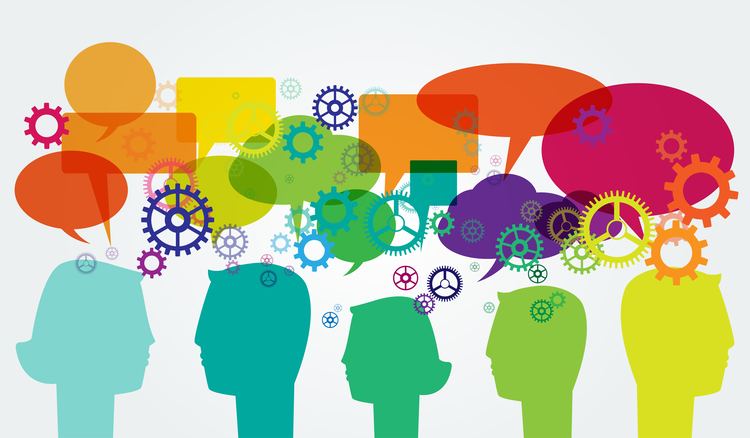 | ||
Daniel goleman social intelligence talks at google
Social intelligence is the capability to effectively navigate and negotiate complex social relationships and environments. Social scientist Ross Honeywill believes social intelligence is an aggregated measure of self- and social-awareness, evolved social beliefs and attitudes, and a capacity and appetite to manage complex social change. Psychologist Nicholas Humphrey believes that it is social intelligence, rather than quantitative intelligence, that defines humans.
Contents
- Daniel goleman social intelligence talks at google
- The neuroscience of social intelligence bill von hippel at tedxuq 2014
- Hypothesis
- Measurement
- Differences from intelligence
- Additional views
- References

The original definition by Edward Thorndike in 1920 is "the ability to understand and manage men and women and girls, to act wisely in human relations". It is equivalent to interpersonal intelligence, one of the types of intelligence identified in Howard Gardner's theory of multiple intelligences, and closely related to theory of mind. Some authors have restricted the definition to deal only with knowledge of social situations, perhaps more properly called social cognition or social marketing intelligence, as it pertains to trending socio-psychological advertising and marketing strategies and tactics. According to Sean Foleno, social intelligence is a person’s competence to understand his or her environment optimally and react appropriately for socially successful conduct.

The neuroscience of social intelligence bill von hippel at tedxuq 2014
Hypothesis

The social intelligence hypothesis states that social intelligence, that is, complex socialization such as politics, romance, family relationships, quarrels, collaboration, reciprocity, and altruism, (1) was the driving force in developing the size of human brains and (2) today provides our ability to use those large brains in complex social circumstances. That is, it was the demands of living together that drove our need for intelligence generally. Archaeologist Steve Mithen believes that there are two key periods of human brain growth that contextualize the social intelligence hypothesis. The first was around two million years ago, when the brain more than doubled, from around 450cc to 1,000cc by 1.8 million years ago. Brain tissue is very expensive metabolically, so it must have served an important purpose. Mithen believes that this growth was because people were living in larger, more complex groups, and had to keep track of more people and relationships, which required a greater mental capacity and so a larger brain.

The second growth in human brain size occurred between 600,000 and 200,000 years ago, when the brain reached its modern size. This growth is still not fully explained. Mithen’s believes that it is related to the evolution of language. Language is probably the most complex cognitive task we undertake. It is directly related to social intelligence because we mainly use language to mediate our social relationships.
So social intelligence was a critical factor in brain growth, social and cognitive complexity co-evolve.
Measurement

The social intelligence quotient (SQ) is a statistical abstraction, similar to the ‘standard score’ approach used in IQ tests, with a mean of 100. Scores of 140 or above are considered to be very high. Unlike the standard IQ test, it is not a fixed model. It leans more to Jean Piaget’s theory that intelligence is not a fixed attribute but a complex hierarchy of information-processing skills underlying an adaptive equilibrium between the individual and the environment. Therefore, an individual can change their SQ by altering their attitudes and behaviour in response to their complex social environment.

SQ has until recently been measured by techniques such as question and answer sessions. These sessions assess the person's pragmatic abilities to test eligibility in certain special education courses, however some tests have been developed to measure social intelligence. This test can be used when diagnosing autism spectrum disorders, including autism and Asperger syndrome. This test can also be used to check for some non-autistic or semi-autistic conditions such as semantic pragmatic disorder or SPD, schizophrenia, dyssemia and ADHD.
Some social intelligence measures exist which are self-report. Although easy to administer, there is some question as to whether self-report social intelligence measures would better be interpreted in terms of social self-efficacy (that is, one's confidence in one's ability to deal with social information).
People with low SQ are more suited to work with low customer contact, as well as in smaller groups or teams, or independently, because they may not have the required interpersonal communication and social skills for success on with customers and other co-workers. People with SQs over 120 are considered socially skilled, and may work exceptionally well with jobs that involve direct contact and communication with other people.
George Washington University Social Intelligence Test : Is one of the only ability measure available for assessing social intelligence and was created in June 1928 by Dr.Thelma Hunt a psychologist from George Washington University. It was originally proposed as a measurement of a person's capacity to deal with people and social relationships. The test is designed to assess various social abilities which consisted of observing human behavior, social situation judgement, name & face memory and theory of mind from facial expressions. The George Washington University Social Intelligence Test revised second edition consists of items as quoted:
Differences from intelligence
Nicholas Humphrey points to a difference between intelligence as measured by IQ tests and social intelligence. Some autistic children are extremely intelligent because they are very good at observing and memorising information, but they have low social intelligence. Similarly, chimpanzees are very adept at observation and memorisation (sometimes better than humans) but are, according to Humphrey, inept at handling interpersonal relationships. What they lack is a theory of others' minds. For a long time, the field was dominated by behaviorism, that is, the theory that one could understand animals including humans, just by observing their behavior and finding correlations. But recent theories indicate that one must consider the inner structure behaviour.
Both Nicholas Humphrey and Ross Honeywill believe that it is social intelligence, or the richness of our qualitative life, rather than our quantitative intelligence, that makes humans what they are; for example what it is like to be a human being living at the centre of the conscious present, surrounded by smells and tastes and feels and the sense of being an extraordinary metaphysical entity with properties which hardly seem to belong to the physical world. This is social intelligence.
Additional views
Social intelligence is closely related to cognition and emotional intelligence. Research psychologists studying social cognition and social neuroscience have discovered many principles which human social intelligence operates. In early work on this topic, psychologists Nancy Cantor and John Kihlstrom outlined the kinds of concepts people use to make sense of their social relations (e.g., “What situation am I in and what kind of person is this who is talking to me?”), and the rules they use to draw inferences (“What did he mean by that?”) and plan actions (“What am I going to do about it?”).
M Babu defines social intelligence as "the ability to deal efficiently and thoughtfully, keeping one’s own identity, employing apposite social inputs with a wider understanding of social environment; considering empathetic co-operation as a base of social acquaintance."
More recently, popular science writer Daniel Goleman has drawn on social neuroscience research to propose that social intelligence is made up of social awareness (including empathy, attunement, empathic accuracy, and social cognition) and social facility (including synchrony, self-presentation, influence, and concern). Goleman’s research indicates that our social relationships have a direct effect on our physical health, and the deeper the relationship the deeper the impact. Effects include blood flow, breathing, mood such as fatigue and depression, and weakening of the immune system.
Educational researcher Raymond H. Hartjen asserts that expanded opportunities for social interaction enhances intelligence. This suggests that children require continuous opportunities for interpersonal experiences in order to develop a keen 'inter-personal psychology'. Traditional classrooms do not permit the interaction of complex social behavior. Instead, students in traditional settings are treated as learners who must be infused with more and more complex forms of information. The structure of schools today allows very few of these skills, critical for survival in the world, to develop. Because we so limit the development of the skills of "natural psychologist" in traditional schools, graduates enter the job market handicapped to the point of being incapable of surviving on their own. In contrast, students who have had an opportunity to develop their skills in multi-age classrooms and at democratic settings rise above their less socially skilled peers. They have a good sense of self, know what they want in life and have the skills to begin their quest.
The issue here is psychology versus social intelligence—as a separate and distinct perspective, seldom articulated. An appropriate introduction contains certain hypothetical assumptions about social structure and function, as it relates to intelligence defined and expressed by groups, constrained by cultural expectations that assert potential realities, but make no claims that there is an "exterior" social truth to be defined. This perspective pursues the view that social structures can be defined with the warning that what is mapped into the structure and how that information is stored, retrieved, and decided upon are variable, but can be contained in an abstract and formal grammar—a sort of game of definitions and rules that permit and project an evolving intelligence. Two halves of the coin: one half psychology; the other half social. Unfortunately, most references to social intelligence relate to an individual's social skills. Not mentioned, and more important, is how social intelligence (speaking of a group or assembly of groups) processes information about the world and shares it with participants in the group(s). Are there social structures or can they be designed to accumulate and reveal information to the individual or to other groups. The bigger question is how groups and societies map the environment (ecological, social and personal) into a social structure. How is that structure able to contain a worldview and to reveal that view to the participants? How are decisions made?
